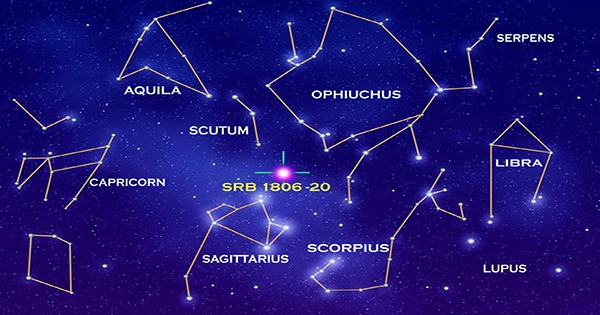Constellations: There are a number of various ways to define constellations, but most people understand them to be collections of stars. Frequently, it’s a collection of stars that have been given a name and take on the appearance of a specific shape in the sky. From Earth, these stars are far away. They have nothing at all to do with one another. In a constellation, some stars may be nearby while others may be quite far away. However, if you used lots of imagination and drew lines in the sky between the stars like a dot-to-dot puzzle, the image would resemble an item, an animal, or a person.
Constellations are groups of stars that appear to form recognizable patterns or shapes in the night sky when viewed from Earth. These patterns were named after mythological figures, animals, and objects by ancient civilizations, who used them for navigation and storytelling.
There are 88 modern constellations officially recognized by the International Astronomical Union (IAU). Some of the most well-known constellations include Orion, Ursa Major (also known as the Big Dipper), Cassiopeia, and the Southern Cross.
While the stars in a constellation appear to be close together, they are actually located at vastly different distances from Earth. Some stars in a constellation may be hundreds or thousands of light-years away, while others may be much closer.
What constellations can you see in the night sky?
The constellations visible in the night sky depend on the time of year and the observer’s location on Earth. Here are a few examples of constellations you might be able to see in the night sky:
- Orion – visible in the winter months in the northern hemisphere, it’s one of the most recognizable constellations with a distinctive pattern of three stars in a row for the belt and two stars on either side forming its shoulders and knees.
- Ursa Major – also known as the Big Dipper, is a constellation visible year-round in the northern hemisphere. Its seven bright stars form a shape resembling a dipper.
- Cassiopeia – visible in the northern hemisphere in the fall and winter months, it is often referred to as the “W” constellation due to its distinct shape in the sky.
- Scorpius – visible in the summer months in the southern hemisphere, it has a striking shape that resembles a scorpion with a curved tail.
- Crux – also known as the Southern Cross, it is visible in the southern hemisphere and has a distinctive cross shape that makes it easy to identify.
These are just a few examples of the many constellations that can be seen in the night sky. With clear skies and away from city lights, you can see many more. It’s a fascinating hobby to explore!
The difference between Astrology and Astronomy:
Astrology and astronomy are often confused with each other, but they are actually two very different disciplines.
The scientific study of everything in space is known as astronomy. Scientists such as astronomers investigate stars and galaxies, the majority of which are located far from our planet and are studied. We can learn more about how the cosmos was created, what else is out there, and how we fit in by studying the scientific features of these objects in space.
Astronomy and astrology are not the same thing. Astronomy adheres to the scientific method, which includes facts and proof. The foundation of astrology is the idea that by observing specific stars and planets in the sky, one may make predictions about the future or learn more about oneself. Although astrology is significant to some cultural traditions, its assertions are not supported by facts.
Astronomy is the scientific study of celestial objects and phenomena in the universe, including stars, planets, galaxies, black holes, and the structure of the universe itself. Astronomers use telescopes and other instruments to observe, measure, and analyze these objects and phenomena, and they develop theories and models to explain the observations. Astronomy is a branch of science and is subject to scientific scrutiny and verification.
Astrology, on the other hand, is a belief system that claims to interpret the positions and movements of celestial objects to predict future events and personality traits of individuals. Astrology is based on the idea that there is a connection between the positions of celestial objects and the events that occur on Earth. However, there is no scientific evidence to support the claims of astrology, and its predictions have been debunked by scientific studies.
In summary, astronomy is a scientific field that studies celestial objects using scientific methods, while astrology is a belief system that claims to use celestial positions to make predictions about individuals’ lives, but without scientific evidence.
















